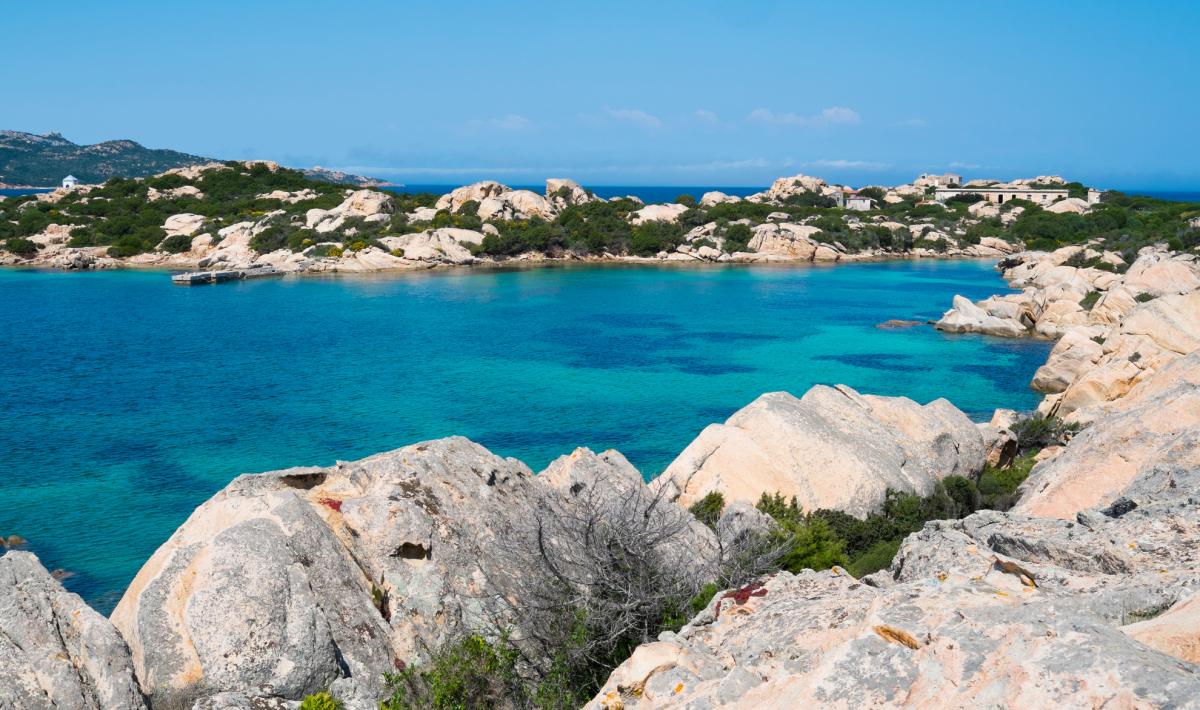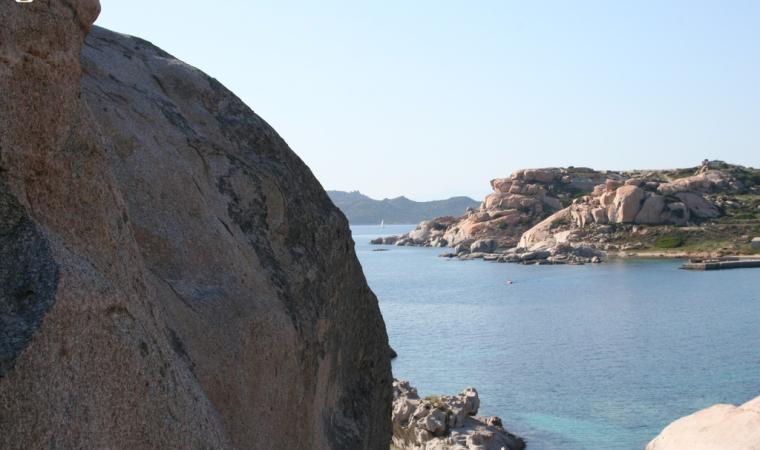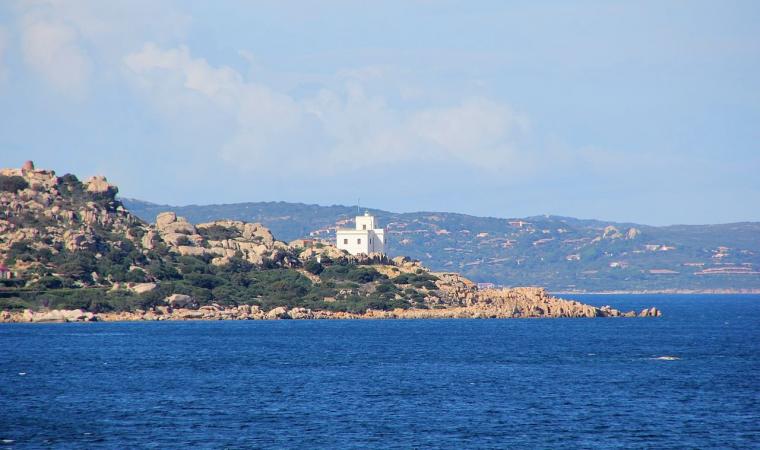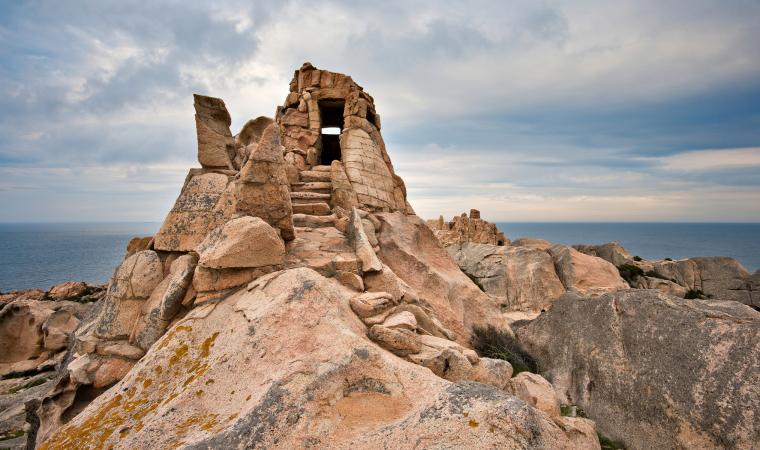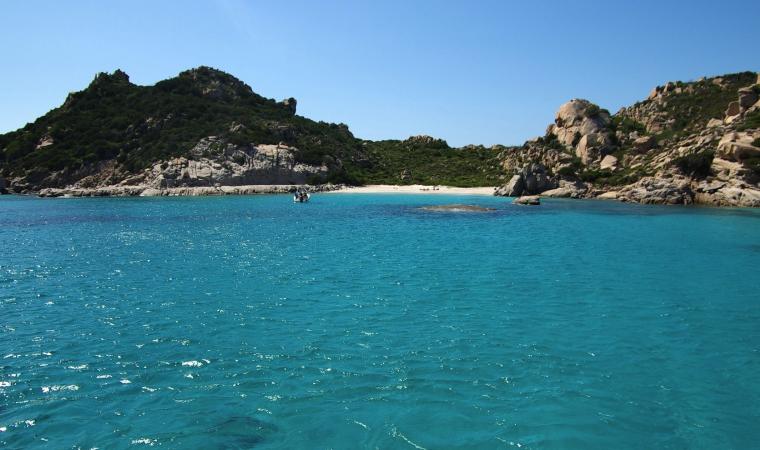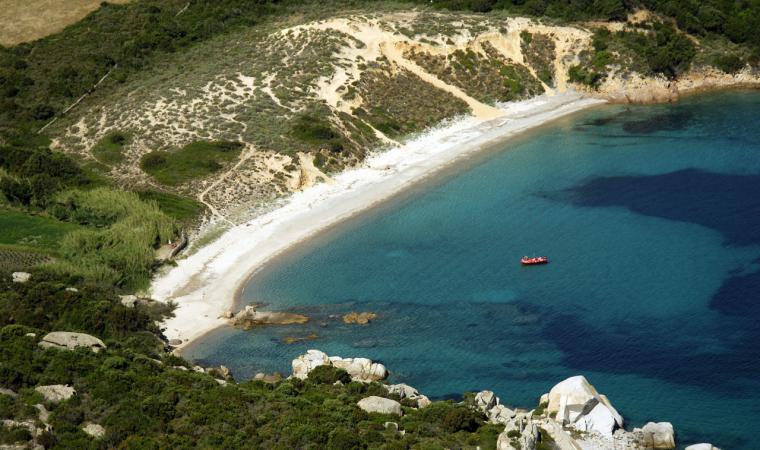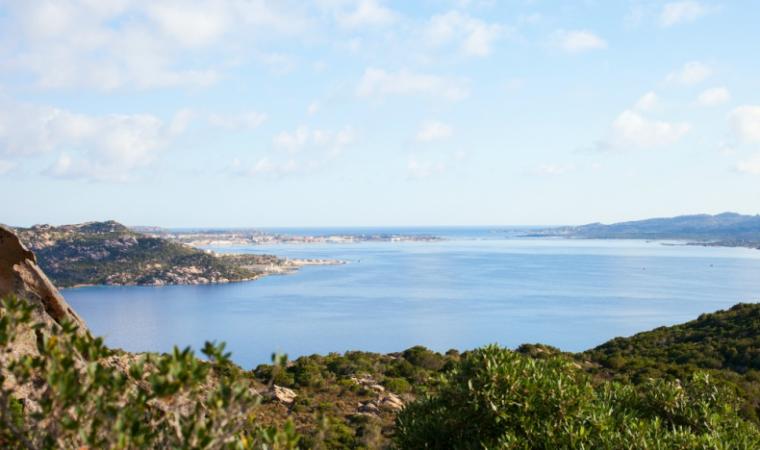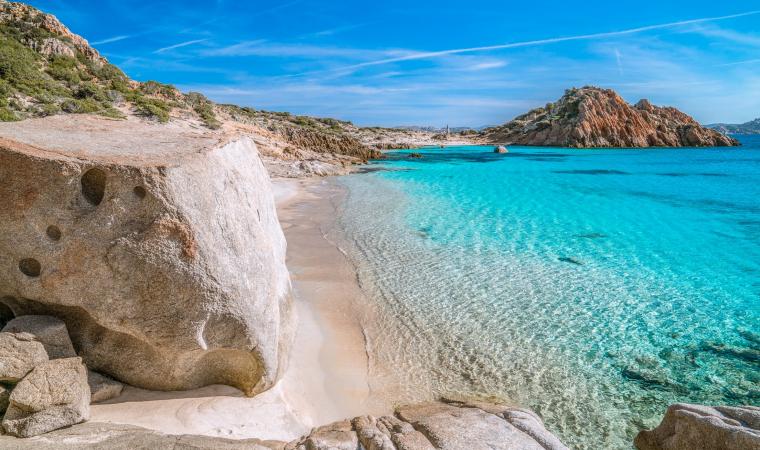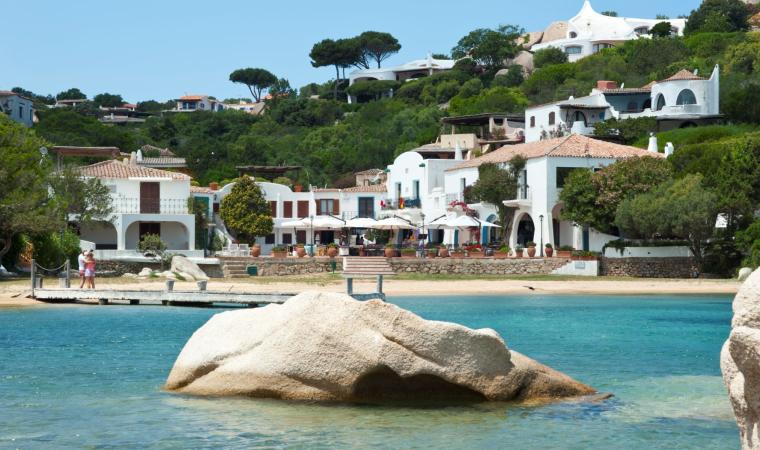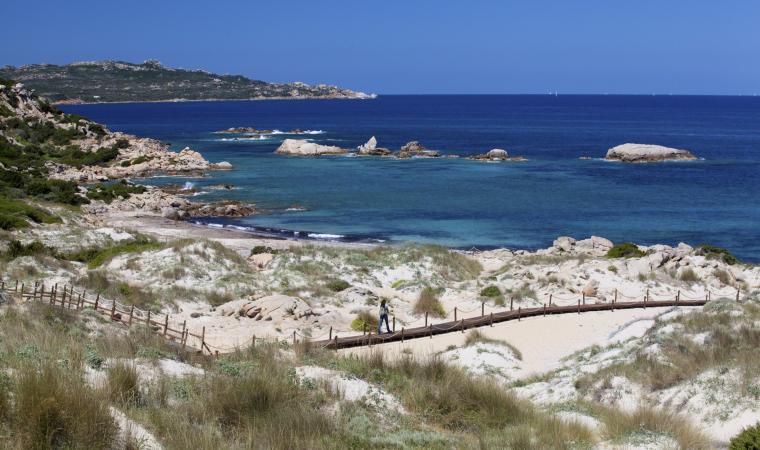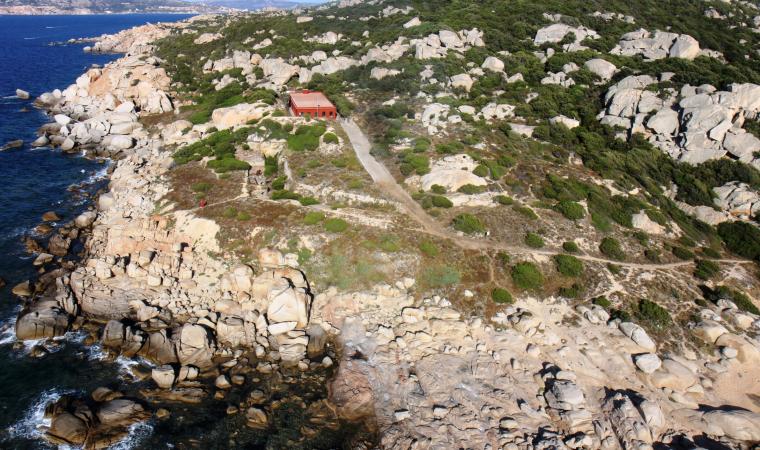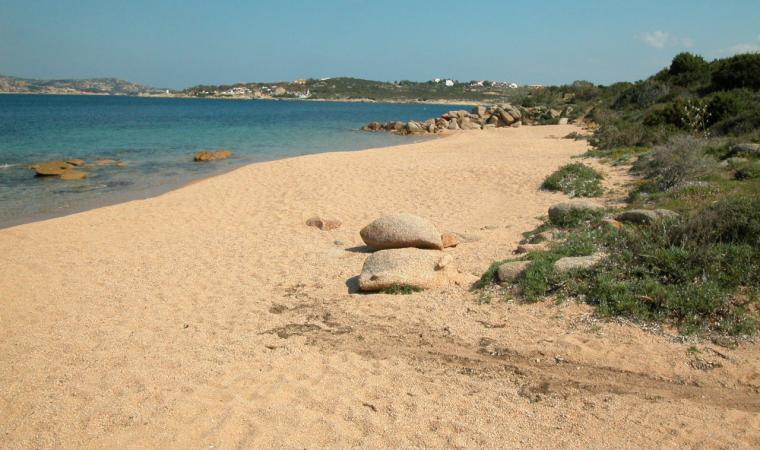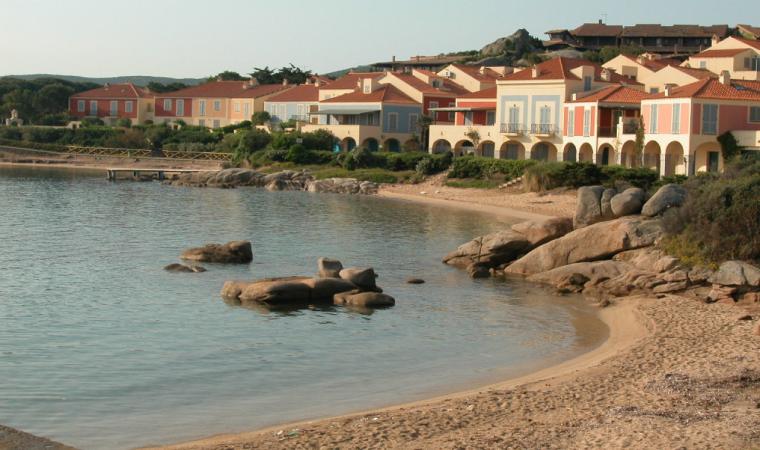Coastal granite quarries were a significant part of the history of the Maddalena Archipelago, where granite mining began in the 19th century and it was exported to many parts of the world. They are found particularly on the beaches of the western part of its largest island. The most shining example is the pink and white granite quarry of Cala Francese, active until the Second World War and now open to the public: you can admire via ferratas, old machinery, a train and cranes. Located to the south of the promontories of Punta Carlotto - known for its military battery - and Punta Testiccioli, the large inlet of Cala Francese forms various small rocky beaches and can be reached along the road that leads to the fortification. Particularly in its southernmost part, there is a small beach made up of light, medium-grained sand, embellished with smooth pebbles.
It is delimited by two cliffs, which protect it from the winds. The seabed is mainly sandy and the water rapidly becomes deep near the shore. The typical granite rock around it, covered with thick Mediterranean scrub, makes it one of the pearls of La Maddalena, the entire coastal perimeter of which will enchant you with 45 kilometres of cliffs, inlets and coves. To the south of Cala Francese, you’ll find the shining colours of Punta Tegge and the captivating Nido d’Aquila. To the north, you’ll find rocks shaped by the wind and beaches of white sand dunes like Bassa Trinita, fine sand surrounded by granite rocks, and then Cala Lunga and Monti d’Arena. To the east, not far beyond the isthmus that connects La Maddalena to Caprera, where there are multiple natural and cultural attractions, you will find the delightful scenery of Spalmatore. You can also set out from La Maddalena, to discover the other islands of the national park: Santo Stefano, Budelli (with the famous Spiaggia Rosa or Pink Beach), Razzoli, Santa Maria and Spargi.

